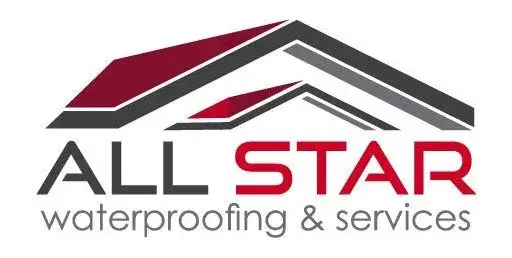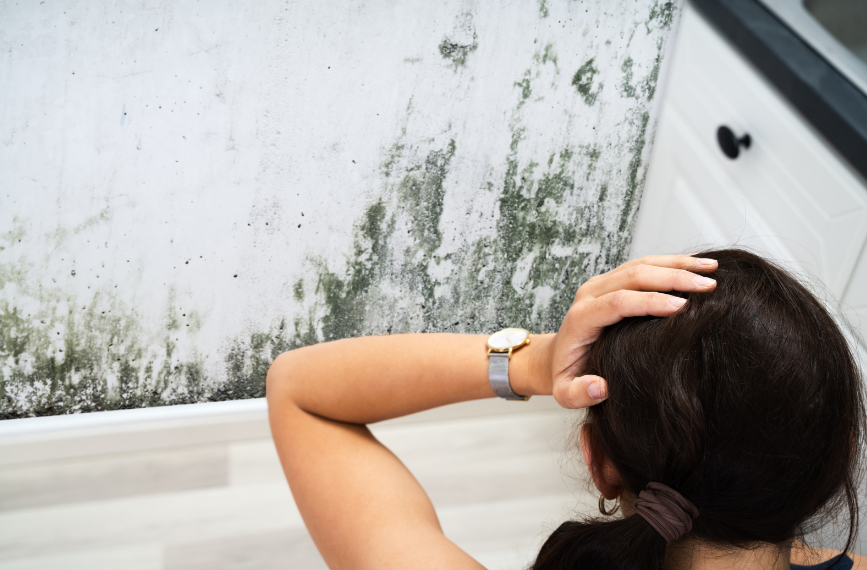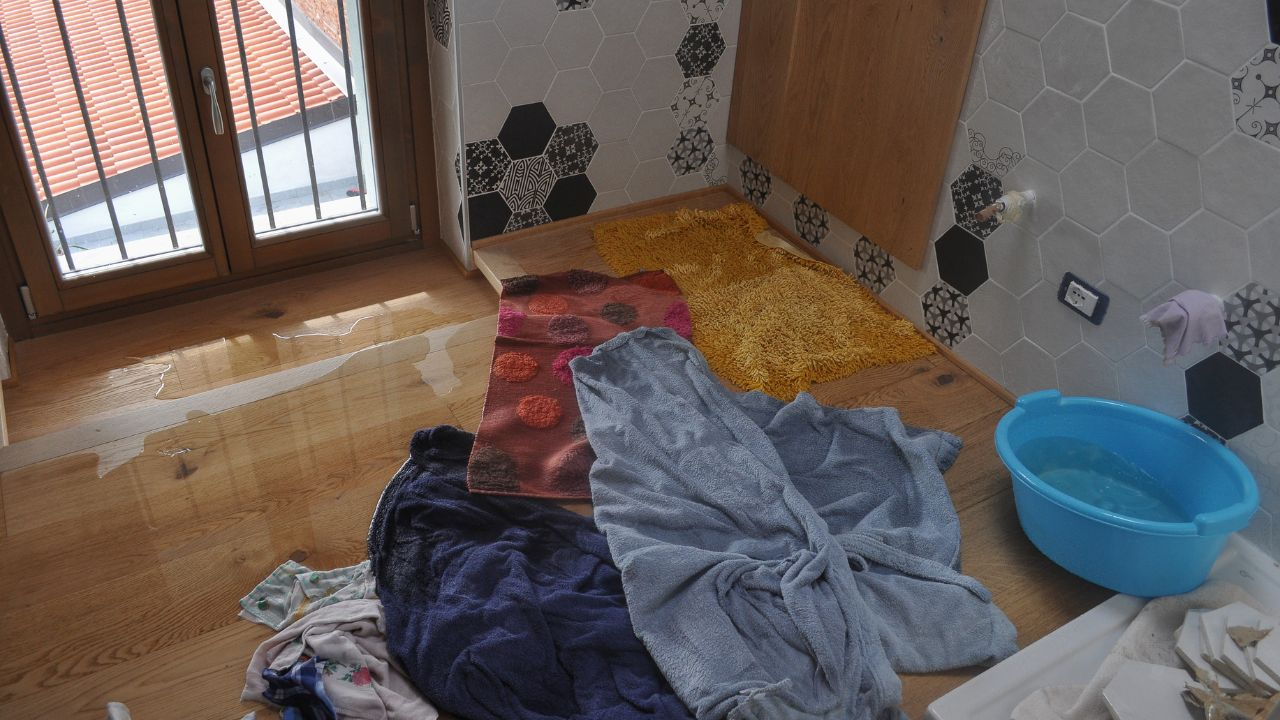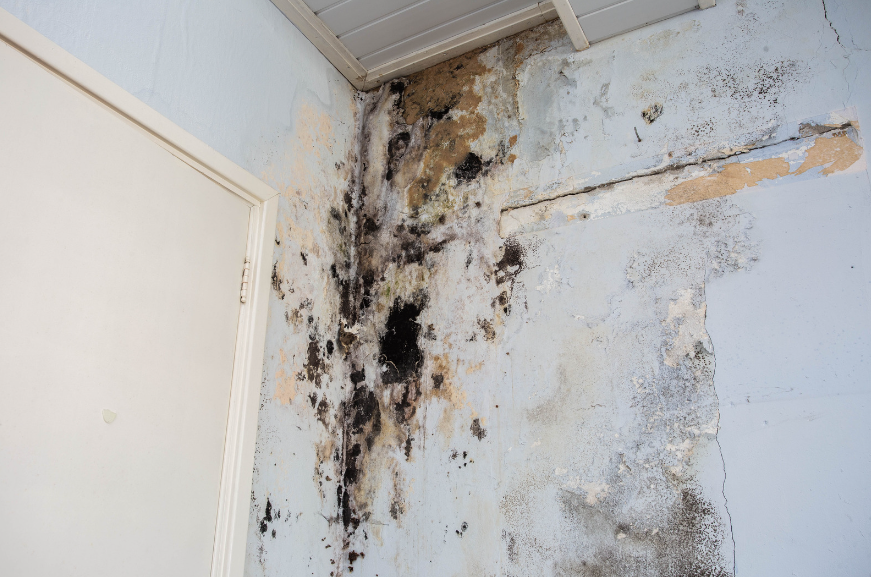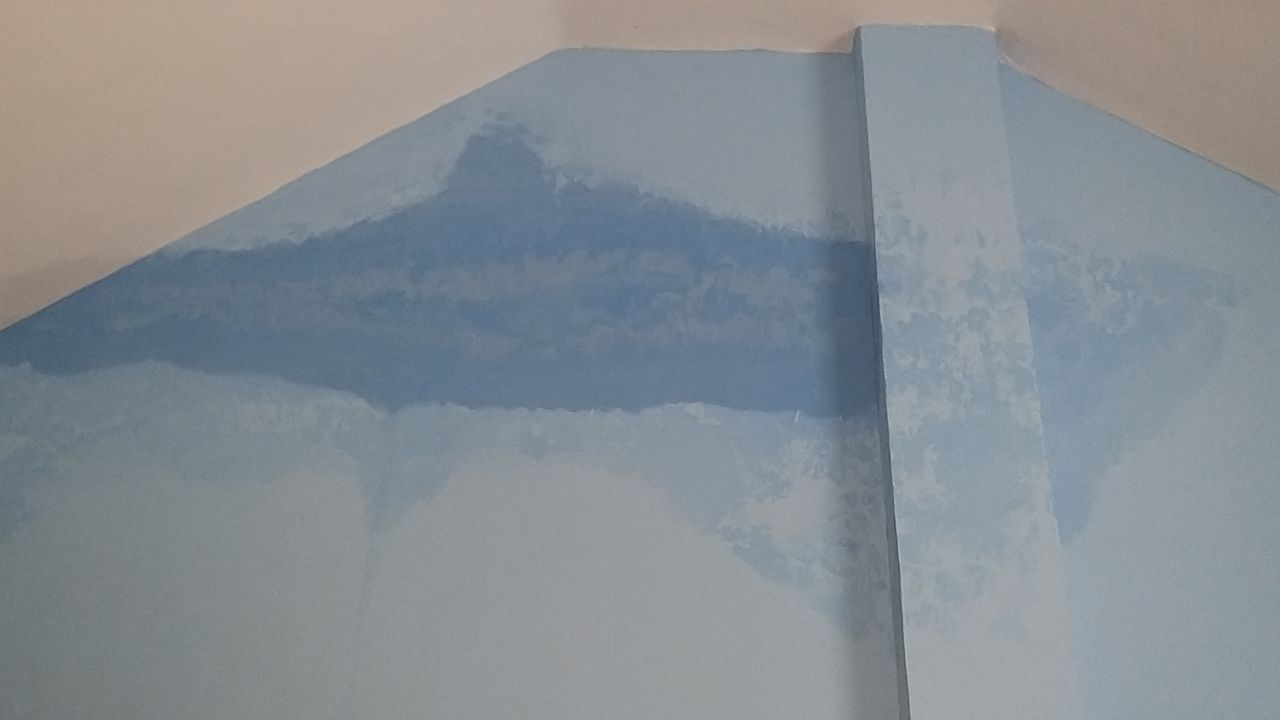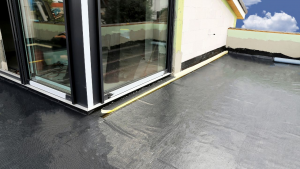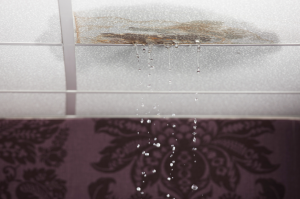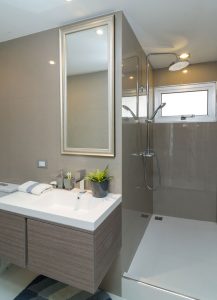Interfloor leakage is a common issue in the building industry, affecting both upper- and lower-floor flat owners. It often leads to disputes and costly repairs.
The upper floor bears the presumption of a leak and damage anytime the building management notices signs of a water leak and ceiling damage. The lower floors usually face the effects of a ceiling leak, including humid air, poor hygiene, indoor air quality and unnaturally cold surfaces.
Understanding the causes, implications, and resolution process is essential for managing this problem effectively.
In this article, we’ll explore the intricacies of inter-floor leakage and ways to address it to prevent the accelerated degradation of building materials and fixtures.
What Is Interfloor Leakage?
Interfloor leakage refers to the seepage or leakage of water between the floors of a building.
It can originate from various sources, such as leaking pipes, faulty waterproofing systems, improper construction practices, or excessive moisture buildup.
This type of leakage typically occurs when gaps, cracks, or weaknesses in the flooring or waterproofing membranes allow water to penetrate from one floor to another.
Interfloor leakage poses several risks and can lead to significant damage to the building structure, as well as potential safety hazards and health concerns. It can cause structural deterioration, weaken building materials, promote the growth of mould and mildew, damage electrical systems, and compromise the integrity of the building’s foundation.
What Are the Common Causes of Interfloor Leakage?
Poor Waterproofing: Inadequate or deteriorated waterproofing membranes between floors can allow water to seep through and cause leakage.
Faulty Plumbing: Leaking pipes or fixtures between floors can contribute to inter-floor leakage, especially if the plumbing infrastructure is poorly installed or maintained.
Cracks or Gaps in Flooring: Structural defects, such as cracks or gaps in floor materials, can allow water to penetrate between floors.
Improper Construction Practices: Insufficient sealing or improper installation of flooring materials during construction can leave vulnerabilities that may lead to inter-floor leakage over time.
Condensation: Dampness and moisture derived from water due to condensation is common in insulated copper pipes and condensate water pipes of air conditioner systems. Condensation occurs when humid air encounters cold surfaces, resulting in moisture buildup.
Water Intrusion from External Sources: Water ingress from external sources such as heavy rainfall, flooding, or landscaping issues can find its way between floors if proper drainage systems are not in place.
Damage to Building Components: Damage to structural elements such as foundations, walls, or ceilings can compromise the integrity of the building envelope, allowing water to infiltrate between floors.
Implications and Challenges
The issue of inter-floor leakage presents significant implications and challenges for both upper and lower-floor residents.
Upper-floor owners may face substantial repair costs and potential conflicts with their downstairs neighbours. Meanwhile, those residing on lower floors contend with the inconvenience of ceiling leaks, compromised indoor air quality, mould growth, and deterioration of building materials.
Adding to the complexity of resolving such disputes is the common assumption that upper-floor residents bear no responsibility for inter-floor leaks. Furthermore, the involvement of the building and construction authority in addressing these issues may vary depending on the extent of the damage incurred.
How to Handle Interfloor Leakage in Singapore
Given the high-density living conditions and prevalence of high-rise buildings in Singapore, inter-floor leakage poses a significant concern for every flat owner.
Dealing with inter-floor leakage requires a proactive approach and adherence to specific steps to mitigate the damage and resolve the issue effectively.
Here’s how to tackle inter-floor leakage in Singapore:
Identify the Source
The first step is to determine the source of the leakage. Conduct a thorough inspection of both the upper and lower floors to pinpoint the exact location and cause of the leak.
Communicate with Neighbours
Maintain open communication with your upper unit and lower unit neighbours, especially if the leakage affects multiple units. Collaborate on finding solutions and address any concerns or disputes constructively.
Engage Professional Help
Seek assistance from qualified professionals, such as licensed plumbers or building inspectors, to assess the extent of the damage and recommend appropriate solutions.
Resolution Process
Resolving ceiling leak issues involves a joint inspection by the parties involved, including representatives from the Strata Title Board (STB) and building management in Singapore. During the inspection, evidence of dampness and moisture, visible mould, and other signs of water leakage are documented.
Rectification Measures
The Strata Titled Board (STB), with its enhanced powers, may mediate between parties and hear the matter impartially. Rectification measures, such as repair works and professional waterproofing systems installation, may be necessary to address the root cause of the leakage.
Legal Considerations
Under the Strata Management Act, both lower and upper-floor flat owners are required to carry out repair works for inter-floor leaks jointly.
However, disputes over liability and repair costs may arise, necessitating mediation and legal intervention. The panel of impartial members appointed by the STB, especially in HDB flats, plays a crucial role in resolving such disputes and ensuring fair outcomes.
Compliance with Regulations
Ensure that all repair works comply with building regulations and codes set forth by the relevant authorities in Singapore. This includes obtaining necessary permits and approvals for repair activities.
Building Awareness and Prevention
Building awareness among flat owners about the importance of maintaining proper waterproofing and promptly addressing inter-floor leakage is essential.
Implement a schedule for regular maintenance of the plumbing system and building structure to prevent future occurrences of inter-floor leakage. This may include periodic inspections, cleaning of drains and gutters, and timely repairs of any signs of deterioration.
Take Proactive Steps to Protect Your Property from Interfloor Leakages Today!
By understanding the causes, implications, and resolution process, flat owners can mitigate the impact of inter-floor leakage and ensure a conducive living environment for all residents.
At Allstar Waterproofing, we guarantee excellent plumbing services and remedies for leakage in water. Our solutions are long-term safeguards against future leaks in your property, not just band-aid fixes, thanks to our strict quality standards, the use of premium materials, and knowledgeable specialists.
Contact us today!
